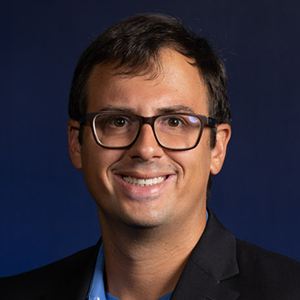The air-sea interface is the area of the storm where there is turbulent exchange of momentum, heat, and moisture between the atmosphere and the ocean. Yet, it is the one of the most sparsely sampled areas of the storm since it is too dangerous to fly crewed aircraft close to the ocean.
The most common measurement tool that directly samples near the interface is the dropsonde, which measures a single profile of atmospheric temperature, pressure, humidity, and winds. While the dropsonde is reliable, most aircraft missions deploy less than 20 of them which makes it challenging to do any turbulence research. One of the tools to overcome this limitation is a small uncrewed aerial system (sUAS) which can be launched by NOAA’s WP-3D (P-3) Hurricane Hunter aircraft.

Dr. Josh Wadler,
Embry-Riddle University
I joined the sUAS team as a postdoc with NOAA’s Hurricane Research Division in 2020 and will present some of the successes and challenges since then. I will also talk about the process of launching a sUAS into a storm, the logistics of the flight planning, and some recent research results. Most of the analysis will be of flights conducted in 2024, our most successful year, when we successfully launched 19 sUAS into Hurricanes Ernesto, Francene, Helene, and Milton.
Dr. Josh Wadler is an assistant professor of meteorology at Embry-Riddle Aeronautical University in Daytona Beach, FL. He holds a Ph.D. in Meteorology and Physical Oceanography from the University of Miami. Before arriving at EmbryRiddle, he was a postdoctoral researcher with the Hurricane Research Division at NOAA.
His research interests broadly cover tropical cyclone (TC or hurricane) structure and intensity change. This includes studying boundary layer thermodynamics, air-sea interactions, precipitation and kinematic structures, and TC-environmental interactions. He approaches these problems from both observational and numerical modeling perspectives. Dr. Wadler also experiments with using new sampling techniques and platforms, such as small uncrewed aircraft systems (UAS), to sample TCs. Besides research, he is passionate about mentoring and teaching students.